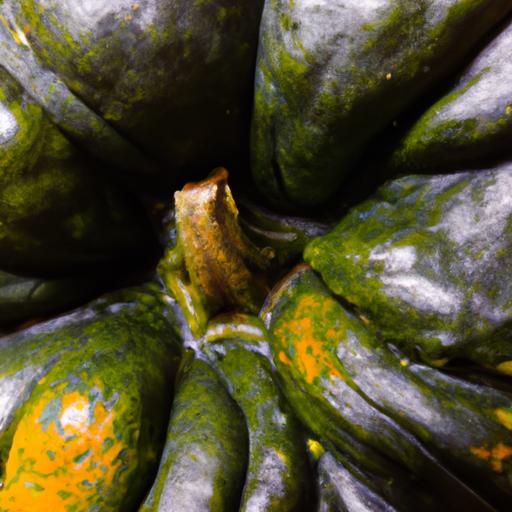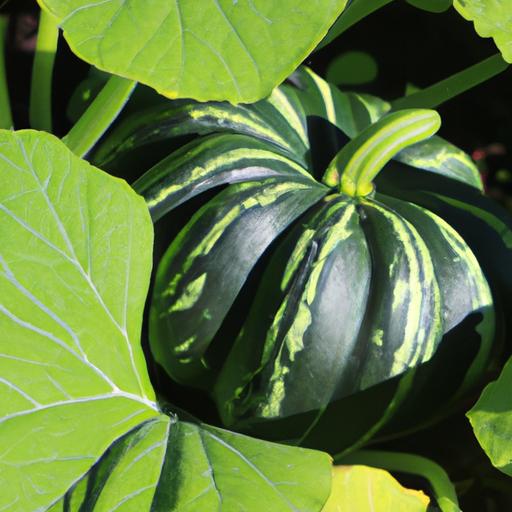Learn how to grow buttercup squash in your own garden with this comprehensive guide. Cultivate healthy and delicious squash with expert tips from Rowe Organic.
Are you a fan of delicious and nutritious vegetables? Have you ever considered growing your own buttercup squash? In this comprehensive guide, we will walk you through the process of growing buttercup squash, step by step. Get ready to cultivate your very own green sanctuary with Rowe Organic!
Introduction
Buttercup squash is a versatile and flavorful vegetable that has gained popularity among gardening enthusiasts. Its unique taste and rich nutritional profile make it a fantastic addition to any kitchen. By growing buttercup squash at home, you not only ensure a fresh and organic supply of this superfood but also experience the joy of nurturing a thriving plant and harvesting the fruits of your labor.

Understanding Buttercup Squash
Before delving into the details of growing buttercup squash, let’s familiarize ourselves with this remarkable vegetable. Buttercup squash, known for its distinctive dark green skin and sweet, orange flesh, belongs to the Cucurbitaceae family. It boasts an impressive nutritional profile, packed with vitamins A and C, fiber, and antioxidants. Its rich, nutty flavor adds depth to a variety of dishes, from soups and stews to roasted vegetables and even desserts.
Different Varieties of Buttercup Squash
Several varieties of buttercup squash exist, each with its own unique characteristics. Some popular types include:
-
Burgess Buttercup: This classic variety is recognized for its deep green skin, turban-like shape, and vibrant orange flesh. It is highly sought after for its smooth and velvety texture.
-
Bonbon Buttercup: Bonbon buttercup squash is a newer hybrid that offers a compact size and a sweeter flavor. Its small, single-serving portions make it perfect for roasting or stuffing.
-
Kabocha Buttercup: Kabocha buttercup squash, also known as Japanese pumpkin, features a slightly drier and denser texture than other varieties. Its flavor is often described as a delightful blend of sweet potato and pumpkin.
Understanding the unique characteristics of these varieties helps you choose the one that suits your taste preferences and growing conditions.
Step-by-Step Guide: How to Grow Buttercup Squash
Now, let’s dive into the step-by-step process of successfully growing buttercup squash in your own garden. By following these guidelines, you’ll be well on your way to cultivating healthy and abundant plants.
1. Ideal Climate and Soil Conditions
Buttercup squash thrives in warm climates with plenty of sunlight. It requires a minimum of six hours of direct sunlight each day to flourish. Additionally, the soil should be well-draining and rich in organic matter. Internal Link: Rowe Organic’s guide on soil preparation can provide you with valuable insights on how to create the perfect growing environment for your squash plants.
2. Selecting and Planting Buttercup Squash Seeds or Seedlings
To begin, you have two options: starting from seeds or using seedlings. If you choose to start from seeds, sow them directly into the prepared soil once the frost has passed and the soil has warmed up. Alternatively, you can opt for seedlings purchased from a trusted nursery. Plant the seedlings at the same depth they were grown in their containers, ensuring proper spacing between each plant.
3. Watering, Fertilization, and Pest Control
Watering is crucial to the success of your buttercup squash plants. Keep the soil consistently moist, but avoid overwatering, as it can lead to root rot. Mulching around the plants helps retain moisture and suppresses weed growth. Regularly fertilize the plants with organic matter or a balanced fertilizer to provide essential nutrients.
Pest control is an essential aspect of growing any vegetable, and buttercup squash is no exception. Keep an eye out for common pests like aphids, squash bugs, and vine borers. Internal Link: Rowe Organic’s article on organic pest control provides effective and eco-friendly methods to protect your plants from these invaders.
4. Pruning and Vine Maintenance
Pruning is essential to promote airflow and prevent diseases in your buttercup squash plants. Regularly remove any dead leaves or damaged branches. Additionally, you can trim the vines to prevent them from overpowering other plants or taking up excessive space in your garden.
5. Time to Harvest
Buttercup squash typically takes around 85 to 100 days to mature, depending on the variety and growing conditions. You’ll know it’s time to harvest when the skin turns a deep, solid green and becomes tough. Use a sharp knife or pruning shears to cut the squash from the vine, leaving a small stem attached. Allow the harvested squash to cure in a warm, dry place for a week or two before enjoying them.
FAQ (Frequently Asked Questions) about Growing Buttercup Squash
What is the best time to plant buttercup squash?
The ideal time to plant buttercup squash is after the danger of frost has passed and the soil temperature reaches around 60°F (15°C). This usually occurs in late spring or early summer.
How often should I water my buttercup squash plants?
Water your buttercup squash plants deeply once a week, providing enough water to moisten the soil to a depth of 6 inches. Adjust the frequency based on weather conditions, ensuring the soil remains consistently moist but not waterlogged.
What are the common pests and diseases that affect buttercup squash?
Buttercup squash can be susceptible to pests such as aphids, squash bugs, and vine borers. Diseases like powdery mildew and bacterial wilt can also affect the plants. Regular inspection, proper hygiene, and organic pest control methods are crucial in preventing and addressing these issues.
Can buttercup squash be grown in containers?
While buttercup squash plants can be grown in large containers, they require ample space for their extensive root systems. Choose containers with a minimum depth of 18 inches and ensure proper drainage.
How do I know when it’s time to harvest buttercup squash?
Mature buttercup squash will have a deep, solid green skin and a tough outer shell. The skin should be difficult to puncture with your fingernail. Harvest the squash before the first frost, leaving a small stem attached.
Conclusion
Growing your own buttercup squash is a rewarding experience that allows you to savor the flavors of this nutritious vegetable while connecting with nature. By following our step-by-step guide, you can cultivate a thriving buttercup squash garden and enjoy the bountiful harvests it brings.
At Rowe Organic, we believe in the power of organic gardening to create a green sanctuary for you and your family. We encourage you to explore our organic gardening resources for more expert tips and inspiration. Start growing buttercup squash today and reap the benefits of fresh, homegrown produce. Rowe Organic: Your green sanctuary for expert tips and inspiration in organic gardening. Cultivate, nurture, and grow naturally.


